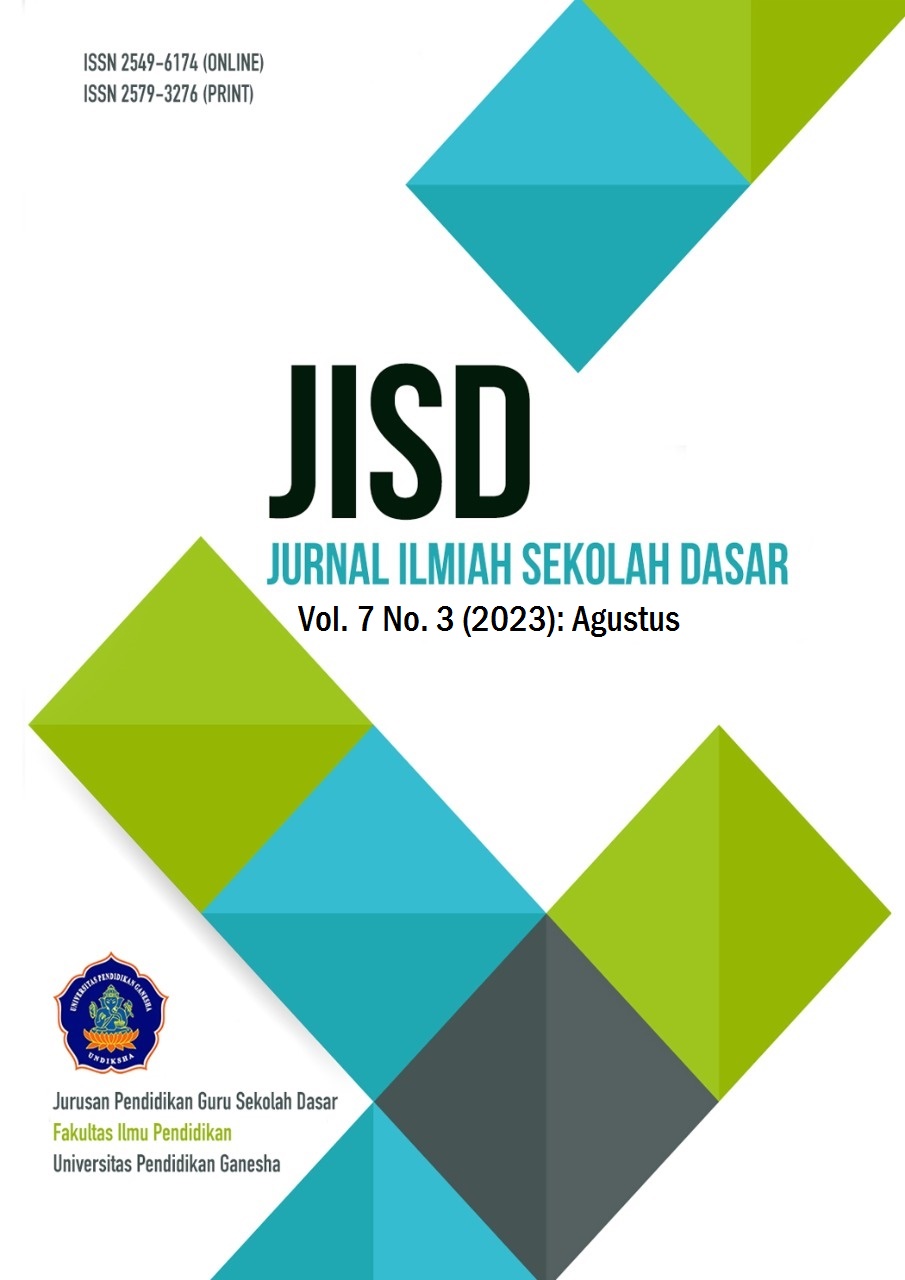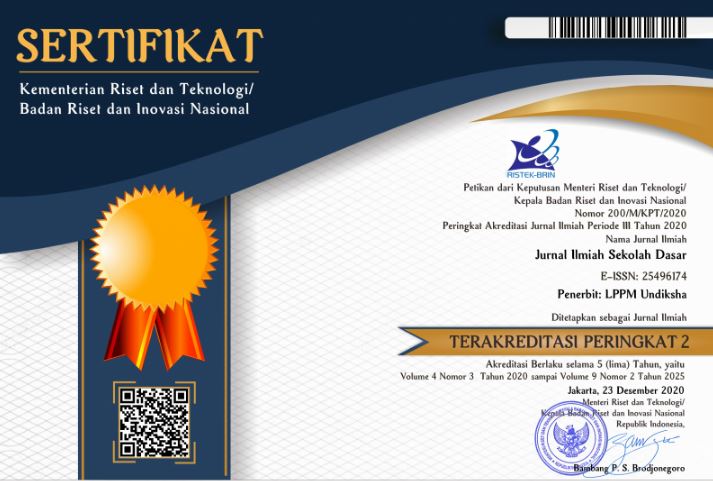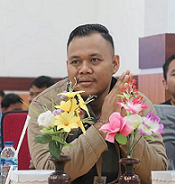Measuring Changes of Students Conceptual Understanding of Literacy and Numeracy in Natural Science by Using Rasch Model
DOI:
https://doi.org/10.23887/jisd.v7i3.59943Keywords:
Literacy, Numeracy, Student Abilities, Rasch ModelAbstract
The low literacy and numeracy abilities of Indonesian students based on the PISA encourage assessment policies based on literacy and numeracy. This study aims to analyze the feasibility of the items developed and changes in students' understanding of concepts after implementing literacy and numeracy-based learning processes on science subject matter topics related to education for sustainable development. The research method used in this research is the one-group pretest-posttest-design experimental method. Concerning the one-group pretest-posttest-design experimental method, the sample in this study was one whole class. Data was collected through a test instrument for students' conceptual understanding of science subjects. Raw data from students' grades were processed using the Rasch Model analysis. Through Rasch's analysis, the pattern of changes in students' conceptual understanding abilities was identified by comparing the response patterns of problem difficulty and students' abilities. The research results show that the items developed in the test instrument are appropriate for measuring students' abilities. Literacy and numeracy-based learning can improve students' understanding of concepts. Seven out of 53 students were identified as having decreased abilities. Student misconceptions cause it, the types of questions developed, student internal factors, and the teaching materials used. This analysis estimates the effectiveness of educational innovations and student ability in detail.
References
Argina, A. W., Mitra, D., Ijabah, N., & Setiawan, R. (2017). Indonesian PISA Result: What Factors and What Should be Fixed? The 1st Education and Language International Conference Proceedings Center for International Language Development of Unissula, 69–79. http://lppm-unissula.com/jurnal.unissula.ac.id/index.php/ELIC/article/view/1212.
Browne, K., Anand, C., & Gosse, E. (2014). Gamification and serious game approaches for adult literacy tablet software. Entertainment Computing, 5(3), 135–146. https://doi.org/10.1016/j.entcom.2014.04.003. DOI: https://doi.org/10.1016/j.entcom.2014.04.003
Bulkani, Fatchurahman, M., Adella, H., & Setiawan, M. A. (2022). Development of Animation Learning Media Based on Local Wisdom to Improve Student Learning Outcomes in Elementary Schools. International Journal of Instruction, 15(1), 55–72. https://eric.ed.gov/?id=EJ1331543. DOI: https://doi.org/10.29333/iji.2022.1514a
Chamisah. (2017). TIMSS and PISA-How They Help The Improvement of Education Assessment in Indonesia. Conference Proceedings ARICIS I, 42–56. https://doi.org/10.22373/aricis.v1i0.935.
Dafouz, E., & Smit, U. (2021). Road-mapping English medium Education in the internationalised University. Ibérica, 42, 245–249. https://link.springer.com/content/pdf/10.1007/978-3-030-23463-8.pdf. DOI: https://doi.org/10.1007/978-3-030-23463-8
Donovan, J. D., Maritz, A., & McLellan, A. (2013). Innovation training within the Australian advanced manufacturing industry. Journal of Vocational Education and Training, 65(2), 256–276. https://doi.org/10.1080/13636820.2013.783614. DOI: https://doi.org/10.1080/13636820.2013.783614
Erman, E. (2016). Factors Contributing to Students ’ Misconceptions in Learning Covalent Bonds. Journal of Research in Science Teaching. https://doi.org/10.1002/tea.21375. DOI: https://doi.org/10.1002/tea.21375
Gal, I., Grotlüschen, A., Tout, D., & Kaiser, G. (2020). Numeracy, adult education, and vulnerable adults: a critical view of a neglected field. ZDM, 52(3), 377–394. https://doi.org/10.1007/s11858-020-01155-9. DOI: https://doi.org/10.1007/s11858-020-01155-9
Hadi, S., Retnawati, H., Munadi, S., Apino, E., & Wulandari, N. F. (2018). The Difficulties of High School Students in Solving Higher-Order Thinking Skills Problems. Problems of Education in the 21st Century, 76(4), 520–532. https://doi.org/10.33225/pec/18.76.520. DOI: https://doi.org/10.33225/pec/18.76.520
Hamdu, G., Fuadi, F. N., Yulianto, A., & Akhirani. (2020). Items Quality Analysis Using Rasch Model To Measure Elementary School Students ’ Critical Thinking Skill On Stem Learning. JPI (Jurnal Pendidikan Indonesia), 9(1), 61–74. https://doi.org/10.23887/jpi-undiksha.v9i1.20884. DOI: https://doi.org/10.23887/jpi-undiksha.v9i1.20884
Harta, J., Rasuh, N. T., & Seriang, A. (2020). Using HOTS-Based Chemistry National Exam Questions to Map the Analytical Abilities of Senior High School Students. Journal of Science Learning, 3(3), 143–148. https://doi.org/10.17509/jsl.v3i3.22387. DOI: https://doi.org/10.17509/jsl.v3i3.22387
Johnson, C. C., Mohr-Schroeder, M. J., J., T., & Moore, L. D. (2020). A Review of the Research. Handbook of Research on STEM Education. In Routledge (p. 526). DOI: https://doi.org/10.4324/9780429021381
Khofifah, S., & Ramadan, Z. H. (2021). Literacy conditions of reading, writing and calculating for elementary school students. Journal of Educational Research and Evaluation, 5(3), 342–349. https://doi.org/10.23887/jere.v5i3.37429.
Laliyo, L. A. R., Hamdi, S., & Pikoli, M. (2021). Implementation of Four-Tier Multiple-Choice Instruments Based on the Partial Credit Model in Evaluating Students’ Learning Progress. European Journal of Educational Research, 10(2), 825–840. https://doi.org/10.12973/eu-jer.10.2.825. DOI: https://doi.org/10.12973/eu-jer.10.2.825
Le, B., Lawrie, G. A., & Wang, J. T. H. (2022). Student Self-perception on Digital Literacy in STEM Blended Learning Environments. Journal of Science Education and Technology, 31(3), 303–321. https://doi.org/10.1007/s10956-022-09956-1. DOI: https://doi.org/10.1007/s10956-022-09956-1
Li, Y., & Schoenfeld, A. H. (2019). Problematizing teaching and learning mathematics as “ given ” in STEM education. International Journal of STEM Education, 9, 1–13. https://doi.org/10.1186/s40594-019-0197-9. DOI: https://doi.org/10.1186/s40594-019-0197-9
Limpo, I. Y., Bachri, S., Ilmar, A., & Patittingi, F. (2018). Potret of Basic Education in Indonesia. Journal of Law, Policy and Globalization, 69, 89–95. https://heinonline.org/hol-cgi-bin/get_pdf.cgi?handle=hein.journals/jawpglob69§ion=14.
Lin, M.-H., Chen, H., & Liu, K.-S. (2017). A Study of the Effects of Digital Learning on Learning Motivation and Learning Outcome. EURASIA Journal of Mathematics, Science and Technology Education, 13(7). https://doi.org/10.12973/eurasia.2017.00744a. DOI: https://doi.org/10.12973/eurasia.2017.00744a
Lucy Avraamidou, & Bryan, L. A. (2018). Science Education Reform: Reflecting on the Past and Raising Questions for the Future. JSTOR Collection, 442, 401–418. https://www.jstor.org/stable/45212215.
Murtonen, M., Gruber, H., & Lehtinen, E. (2017). The return of behaviourist epistemology: A review of learning outcomes studies. Educational Research Review, 22, 114–128. https://doi.org/10.1016/j.edurev.2017.08.001. DOI: https://doi.org/10.1016/j.edurev.2017.08.001
Narut, Y. F., & Supradi, K. (2019). Literasi sains peserta didik dalam pembelajaran ipa di indonesia. Jurnal Inovasi Pendidikan Dasar, 3(1), 61–69. http://jurnal.unikastpaulus.ac.id/index.php/jipd/article/view/214.
Nasamu, R. A. (2021). Influence of Teaching Styles and Learning Styles on Pupils’ Academic Performance in Numeracy in Ilorin Kwara State. Kwara State University (Nigeria) ProQuest Dissertations Publishing, March, 1–19. https://search.proquest.com/openview/8e056d4eb4c89127c13efce54d624b41.
Novitasari, M., Nariomo, S., Fajri, D. N., & Raisia, A. (2022). Critical Thinking Skills Through Literacy and Numeration Oriented Mathematics Student Worksheet. Jurnal Basicedu, 6(4), 5775–5784. https://scholar.archive.org/work/pvk3h4ijgrdyxbbpx46qw2iude/access/wayback. DOI: https://doi.org/10.31004/basicedu.v6i4.3173
Perdana, R., & Suswandari, M. (2021). Literasi Numerasi Dalam Pembelajaran Tematik Siswa Kelas Atas Sekolah Dasar. Absis: Mathematics Education Journal, 3(1), 9. https://doi.org/10.32585/absis.v3i1.1385. DOI: https://doi.org/10.32585/absis.v3i1.1385
Rachman, T. A., Latipah, E., Zaqiah, Q. Y., & Erihadiana, M. (2021). Curriculum Innovation to Improve Indonesian Education in PISA International Assessment in Disruptive Education Era. ICLIQE ’21: Proceedings of the 5th International Conference on Learning Innovation and Quality Education, 1–8. https://doi.org/10.1145/3516875.3516899. DOI: https://doi.org/10.1145/3516875.3516899
Radovanović, D., Hogan, B., & Lalić, D. (2015). Overcoming digital divides in higher education: Digital literacy beyond Facebook. New Media and Society, 17(10), 1733–1749. https://doi.org/10.1177/1461444815588323. DOI: https://doi.org/10.1177/1461444815588323
Rand, M. K., & Morrow, L. M. (2021). The Contribution of Play Experiences in Early Literacy: Expanding the Science of Reading. Reading Research Quarterly, 56(S1), 239– 248. https://doi.org/10.1002/rrq.383. DOI: https://doi.org/10.1002/rrq.383
Randall, N. (2019). A Survey of Robot-Assisted Language Learning ( RALL ). ACM Transactions on Human-Robot Interaction, 9(1), 1–36. https://doi.org/10.1145/3345506. DOI: https://doi.org/10.1145/3345506
Schoenfeld, A. H., III, J. P. S., & Arcavi, A. (2019). Learning: The Microgenetic Analysis of One Student’s Evolving Understanding of a Complex Subject Matter Domain. In Advances in instructional Psychology (pp. 55–175). Routledge. DOI: https://doi.org/10.4324/9781315864341-2
Sehuwaky, N., & Mastuti, A. G. (2021). Ability To Compose Numeration Literacy Questions Based on Acmi’S Skills Through Blended Learning. Matematika Dan Pembelajaran, 10(1), 56–68. https://media.neliti.com/media/publications/503454.
Shine, B., & Heath, S. E. (2020). Techniques for fostering self-regulated learning via learning management systems in on-campus and online courses. Journal of Teaching and Learning with Technology, 9(1), 119–126. https://doi.org/10.14434/jotlt.v9i1.29014. DOI: https://doi.org/10.14434/jotlt.v9i1.29014
Sumintono, B. (2018). Rasch Model Measurements as Tools in Assessment for Learning. Atlantis Press, 173(Icei 2017), 38–42. https://doi.org/10.2991/icei-17.2018.11. DOI: https://doi.org/10.2991/icei-17.2018.11
Sumintono, Bambang, & Widhiarso, W. (2015). Aplikasi Pemodelan RASCH pada Assessment Pendidikan. In TrimKom Publising Home.
Tümay, H. (2016). Reconsidering learning difficulties and misconceptions in chemistry: Emergence in chemistry and its implications for chemical education. Chemistry Education Research and Practice, 17(2), 1–17. https://doi.org/10.1039/x0xx00000x. DOI: https://doi.org/10.1039/C6RP00008H
Utami, W. B., Susongko, P., & Lestiani, H. T. (2019). Estimation of college students ’ ability on real analysis course using Rasch model. REiD (Research and Evaluation in Education), 5(2), 95–102. http://repository.upstegal.ac.id/id/eprint/1449. DOI: https://doi.org/10.21831/reid.v5i2.20924
Walliman, N. (2017). Research Methods: The Basics: 2nd edition (2nd ed.). Routledge.
Wartono, Diantoro, M., & Bartlolona, J. R. (2018). Influence Of Problem Based Learning Model On Student Creative Thinking On Elasticity Topics A Material. Jurnal Pendidikan Fisika Indonesia, 14(1), 32–39. https://doi.org/10.15294/jpfi.v14i1.10654. DOI: https://doi.org/10.15294/jpfi.v14i1.10654
Zahara, T. R., & Sani, A. (2019). Coaching Competency as a Solution for IndonesianHeadmaster of Elementary School in Disruption Era. Proceedings of the 1st International Conference on Business, Law And Pedagogy. https://doi.org/10.4108/eai.13-2-2019.2286504. DOI: https://doi.org/10.4108/eai.13-2-2019.2286504
Zhu, M., Liu, O. L., & Lee, H.-S. (2020). The Effect of Automated Feedback on Revision Behavior and Learning Gains in Formative Assessment of Scientific Argument Writing. Computers & Education, 143, 143. https://doi.org/10.1016/j.compedu.2019.103668. DOI: https://doi.org/10.1016/j.compedu.2019.103668
Downloads
Published
How to Cite
Issue
Section
License
Copyright (c) 2023 Ghullam Hamdu, Deni Hadiana, Icha Apipatunnisa, Ade Yulianto; Novi Sylvia

This work is licensed under a Creative Commons Attribution-ShareAlike 4.0 International License.
Authors who publish with the Journal Ilmiah Sekolah Dasar agree to the following terms:
- Authors retain copyright and grant the journal the right of first publication with the work simultaneously licensed under a Creative Commons Attribution License (CC BY-SA 4.0) that allows others to share the work with an acknowledgment of the work's authorship and initial publication in this journal.
- Authors are able to enter into separate, additional contractual arrangements for the non-exclusive distribution of the journal's published version of the work (e.g., post it to an institutional repository or publish it in a book), with an acknowledgment of its initial publication in this journal.
- Authors are permitted and encouraged to post their work online (e.g., in institutional repositories or on their website) prior to and during the submission process, as it can lead to productive exchanges, as well as earlier and greater citation of published work. (See The Effect of Open Access)










